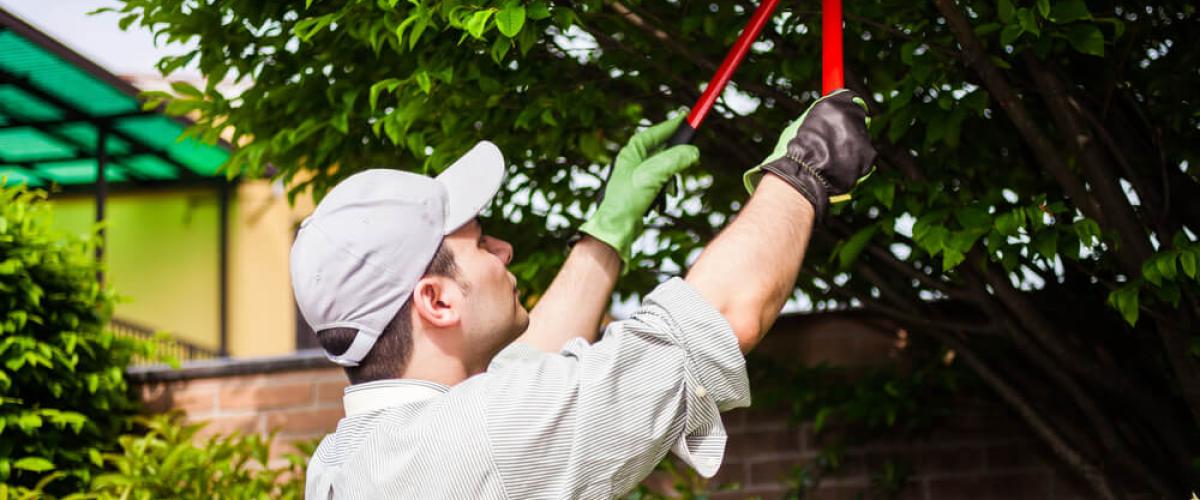
Are you wondering how to trim your apple tree? Maybe you’re thinking about planting one, and are doing research on how to take care of it correctly. Or you already have a tree, and want to make sure you’re doing all you can to keep it healthy. Another term for trimming is “pruning”, which can affect how the tree grows depending on when and how you do it.
When to Prune Your Apple Tree
Pruning your tree should be done at various times to affect or change its growth. Prune your tree during the winter months if it is young and you want it to grow more. The tree has a lot of sugars saved within its branches while in hibernation that it can use to regrow branches at a faster rate compared to other seasons.
If your tree is growing too large, and you want to stunt growth, you should prune your tree during the summer. There is little to no sugar in the branches, so cutting them down will slow down growth. Pruning trees in the spring is good for taking off branches that died over the winter. This will displace the sugars to fewer branches, which will promote the overall health of the tree.
If you notice a diseased branch, you can prune it at any time during the year. Pruning it in winter is the easiest since you can see the branch past the leaves and fruit. Pruning it in late winter will promote tree health and growth.
Pruning should happen yearly, at least, to promote tree health. It should start when the tree is young to promote growth and overall health. If you don’t, the tree will be “alternate bearing”, which means it may produce great apples one year, and not so great ones the next year.
How to Prune Your Tree
Modern Farmer describes how to prune your tree in a variety of steps.
Step 1: Clean Up
Start the pruning process by cleaning up around the tree. Rake dead leaves and branches from around the trunk. Remove sprouts growing out of the base of the tree. These are called “suckers” which take away resources from the tree. You should also cut away any broken branches or little sprouts coming out of larger branches.
Step 2: Thin Out
The next step is to thin out branches that grow downward or cross paths with another branch. Trim the branch that looks less healthy compared to the other. You should also leave 6 to 12 inches between branches to promote health and space to grow. You can also thin out to create the fractal-like pattern to make the tree look more pleasing to the eye.
Step 3: Head Back
The last step is to essentially give the tree a haircut. You trim the ends of the branches to promote thicker, shorter branches rather than long and lanky branches. This will prevent the branches from snapping due to the weight of the fruit. It will also produce smaller, more fruitful trees.
Here is a video example of pruning an apple tree.
Pruning Tips
Keep your shears sharp. This will make trimming easier and quicker. You can sharpen it yourself, or take it to a hardware store to have it sharpened for a small fee. You should also disinfect your shears between trimming trees. It will promote tree health as well as stop disease from passing from tree to tree. You can use isopropyl alcohol and dunk the shears for 30 seconds. Also, make sure to clean up the pruned branches - especially if any of the branches were diseased.
Also, everyone will prune trees differently. Do not feel like you have to do it exactly the same way someone else does. Your tree’s health comes first. Pruning your apple tree is better than not pruning at all. An unpruned tree will produce little to no fruit, and may not even grow or survive. It can become diseased, and pass it on to other apple trees around it.
There are multiple tools you can use to prune a tree. Hand pruners can be used to remove small branches and twigs. Loppers can be used for larger branches by providing long handles to promote more power in the cut. Folding saws can be used for cutting branches that are 3 inches in diameter or larger. Lastly, pole pruners can be used to reach and cut high branches.
In conclusion, these varieties of points will help you prune your apple trees. You have learned when to prune, how, and why pruning is important. This knowledge will help promote your tree’s health and growth, as well as make your trees more bountiful.


